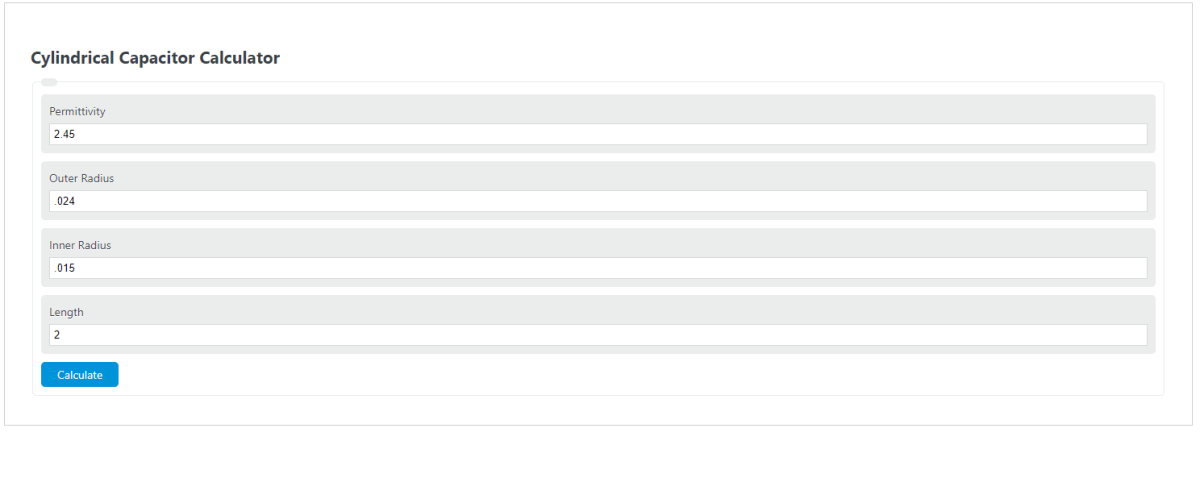Enter the inner radius, outer radius, permittivity, and length into the calculator to determine the cylindrical capacitor capacitance.
- Capacitor Size Calculator
- Capacitor Charge Time Calculator
- Capacitor Discharge Calculator
- Capacitance Calculator
Cylindrical Capacitor Formula
The following equation is used to calculate the Cylindrical Capacitor capacitance.
C = (2*pi*e / (ln(b/a)))*L
- Where C is the capacitance (farads)
- e is the permittivity
- b is the outer radius
- a is the inner radius
- L is the length
The units for the radii and the size should be the same in this case.
What is a Cylindrical Capacitor?
Definition:
A cylindrical capacitor is a type of capacitor shaped in a semi-hollow cylindrical form with an inner and outer radius.
How to Calculate Cylindrical Capacitor Capacitance?
Example Problem:
The following example outlines the steps and information needed to calculate the cylindrical capacitance.
First, determine the permittivity. In this case, the permittivity of the material is 2.45.
Next, determine the outer radius. In this example, the outer radius is .024m.
Next, determine the inner radius. This is measured to be .015m.
Next, determine the length. The length of the cylinder is found to be 2m.
Finally, calculate the capacitance using the formula above:
C = (2*pi*e / (ln(b/a)))*L
C = (2*3.14159*2.45 / (ln(.024/.015)))*2
C = 65.504 farads
FAQ
What is permittivity and how does it affect the capacitance of a cylindrical capacitor?
Permittivity is a measure of how easily a material can be polarized by an electric field, affecting how much electric charge a material can store. In cylindrical capacitors, higher permittivity materials allow for greater capacitance, as they can store more electric charge for a given size and voltage.
How do the dimensions of a cylindrical capacitor influence its capacitance?
The capacitance of a cylindrical capacitor is directly proportional to its length and the permittivity of the material between the cylinders, and inversely proportional to the natural logarithm of the ratio of the outer radius to the inner radius. This means that longer capacitors or those with a smaller ratio of outer to inner radius will have higher capacitance.
Can the formula for cylindrical capacitor capacitance be applied to any cylindrical object?
The formula for calculating the capacitance of a cylindrical capacitor specifically applies to objects designed to function as capacitors, which have two conductive cylindrical surfaces separated by a dielectric material. While the physical principles might apply broadly, the practical application of the formula is limited to cylindrical capacitors or similar structures designed for energy storage.
